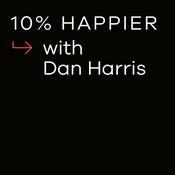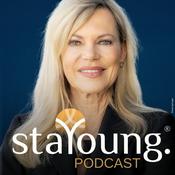31 Episoden

Learnings von unseren Konferenzen, Mindset und Ausblick auf das Thema Okklusion
13.10.2025 | 33 Min.
In dieser Folge geht’s wieder gemütlich zur Sache! 🛋️Wir plaudern über unsere Eindrücke von zwei spannenden Konferenzen & Workshops, von inspirierenden Vortragenden über unterschiedliche Präsentationsstile bis hin zur Frage, wie sehr man selbst das verkörpern sollte, was man vermittelt.Außerdem ein kurzer Blick auf das Mindset hinter Ultra-Laufdistanzen 🏃♂️💭 und ein kleiner Ausblick auf die nächste Folge, in der es um das Thema Okklusionstraining geht. 💪Personenbezogene Bezeichnungen gelten grundsätzlich für alle Geschlechter. Eine möglicherweise fehlende geschlechterspezifische Unterscheidung dient lediglich der besseren Hörbarkeit*.(*oder ergab sich weil es im Zuge des Gesprächs vergessen wurde)

Mehr Leistung durch Stillstand? Vorteile, Studienlage & praktische Umsetzung vom isometrischen Training
29.9.2025 | 54 Min.
🎙️ Isometrisches Training – mehr als nur „halten“!In dieser Folge sprechen Lukas und ich über die unterschiedlichen Muskelaktionen – mit besonderem Fokus auf die isometrische Muskelaktion. 🤔🧠Was euch erwartet:🔹 Attraktivität & Besonderheiten des isometrischen Trainings: Zeiteffizienz / Micro-Dosing / Trainingserfahrung / ...🔹 Wissenschaftliche Terminologie: haltend vs. drückend – wo liegt der Unterschied?🔹 Studienlage: Wie gut ist der Transfer vom isometrischen Training auf Leistungsparameter verschiedenster Sportarten?🔹 Praxis: Implementierung & Strukturierung, so planst du Isometrie sinnvoll in dein Training ein 📝🎧 Isometrische Arbeit kann mehr, als man denkt - scheinbar ein absoluter Alleskönner ⚡️Potenzierungsmechanismen in der Trainingspraxis:https://open.spotify.com/episode/6J8rVHt93uUqOBuyovzK6g?si=ee604b91ea444853Literatur:📖 Fernández-Galván, L. M., Fernández-Viñes, R., & Sánchez-Infante, J. (2025). Effects of Isometric Training on Ankle Mobility and Change-of-Direction Performance in Professional Basketball Players. Applied Sciences, 15(17), 9666. https://doi.org/10.3390/app15179666📖 Egerton, T. (2025). Isometric strength training in endurance runners: A theoretical framework for adaptations and performance outcomes. Strength & Conditioning Journal. Advance online publication. https://doi.org/10.1519/SSC.0000000000000927📖 Lum, D., Barbosa, T.M., Joseph, R. et al. Effects of Two Isometric Strength Training Methods on Jump and Sprint Performances: A Randomized Controlled Trial. J. of SCI. IN SPORT AND EXERCISE 3, 115–124 (2021). https://doi.org/10.1007/s42978-020-00095-w📖 Schaefer,L. V., & Bittmann, F. N. (2017). Are there two forms of isometric muscle action? Results of the experimental studysupport a distinction between a holding and a pushing isometric muscle function. BMC Sports Science, Medicine andRehabilitation, 9, 11.https://doi.org/10.1186/s13102-017-0075-z📖 Gómez-Ferolla, M., Parodi, A., & Magallanes, C. (2024). Comparative analysis of two strength training protocols on throwing speed in women's handball. Retos, 56, 439-448.📖 Lum, D., & Howatson, G. (2023). Comparing the acute effects of a session of isometric strength training with heavy resistance training on neuromuscular function. Journal of Science in Sport and Exercise. Advance online publication. https://doi.org/10.1007/s42978-023-00241-0📖 Lum, D., Joseph, R., Ong, K. Y., Tang, J. M., & Suchomel, T. J. (2023). Comparing the effects of long-term vs. periodic inclusion of isometric strength training on strength and dynamic performances. Journal of Strength and Conditioning Research, 37(2), 305-314. https://doi.org/10.1519/JSC.0000000000004276📖 James,L. P., Weakley, J., Comfort, P., & Huynh, M.(2024). The relationship between isometric and dynamic strength following resistance training: A systematic review, meta-analysis, and level of agreement. International Journal of Sports Physiology and Performance, 19(1), 2-12. https://doi.org/10.1123/ijspp.2023-0066📖 Spieszny, M., Trybulski, R., Biel, P., Zając,A., & Krzysztofik, M. (2022). Post-isometric back squat performance enhancement of squat and countermovement jump. International Journal of Environmental Research and PublicHealth, 19(19),12720. https://doi.org/10.3390/ijerph191912720📖 Hoff, M., Schaefer, L., Heinke, N., & Bittmann, F. (2015). Report on adaptive force, a specific neuromuscular function. European Journal of Translational Myology, 25(3), 5183. https://doi.org/10.4081/ejtm.2015.5183📖 Dos'Santos, T., Thomas, C., Comfort, P., McMahon,J. J., & Jones, P. A. (2017). Relationships between isometric force-time characteristics and dynamic performance. Sports, 5(3), 68. https://doi.org/10.3390/sports5030068Personenbezogene Bezeichnungen gelten grundsätzlich für alle Geschlechter. Eine möglicherweise fehlende geschlechterspezifische Unterscheidung dient lediglich der besseren Hörbarkeit*.(*oder ergab sich weil es im Zuge des Gesprächs vergessen wurde)

Sofa-Talk: Laufen, Polarisiertes Training & slow progress beim Krafttraining
15.9.2025 | 33 Min.
Wir sind zurück! 🎉 Nach einer kleinen Pause starten wir wieder in den Sende-Rhythmus – dieses Mal mit einem Sofa-Talk.Was euch in dieser Folge erwartet:🔹 Warum wir eine Pause eingelegt haben – nicht nur Training sollte periodisiert werden 🕰️🔹 Wie Chris aktuell das Laufen in seinen Alltag integriert und warum Trainingsmethoden, wie etwa das polarisierte Training, nicht von Anfang an das Nonplusultra sind.🔹 Lukas redet über seinen Wettkampf im Dreikampf bei den Bayerischen Meisterschaften – und wir gehen der Frage auf den Grund: einen zukünftigen Trainer engagieren: ja oder nein? 🏋️♂️🏃♂️💪 Weitere Informationen:🎙️Sofa-Talk: Monotonie im Training und Leistungssporthttps://open.spotify.com/episode/18YXGgVsu8JZAyC7UuW2c8?si=7343e2c602554ba9Personenbezogene Bezeichnungen gelten grundsätzlich für alle Geschlechter. Eine möglicherweise fehlende geschlechterspezifische Unterscheidung dient lediglich der besseren Hörbarkeit*.(*oder ergab sich weil es im Zuge des Gesprächs vergessen wurde)

"Velocity-Based" Training: Mehr Leistung durch Tempo im Krafttraining?
23.6.2025 | 57 Min.
🎙️ Folge 9 – Tempo schlägt Prozent?🚀 "Velocity-Based" oder doch lieber "Velocity-inspired"?In dieser Episode liefern wir euch eine Einführung in die Welt des geschwindigkeits-basierten Krafttrainings – eine Methode, die euer Training präziser, individueller und autoregulierter gestalten kann...aber auch viele Mankos mit sich bringt:🔹 Was ist VBT – und warum reicht %-basiertes Training allein nicht immer aus?🔹Die theoretische Grundlagenbeziehung zwischen Last, Geschwindigkeit & Ermüdung.🔹Welche Unklarheiten ergeben sich mit VBT, wie könnt ihr für euch und eure SportlerInnen einen Mehrwert generieren und für welche Zielsetzungen ist VBT (nicht) das richtige Werkzeug?🎧 Viel Spaß beim Reinhören!Literatur:📖 Hickmott, L. M., Butcher, S. J. & Chilibeck, P. D. (2025). Conceptualizing a load and volume autoregulation integrated velocity model to minimize neuromuscular fatigue and maximize neuromuscular adaptations in resistance training. European Journal Of Applied Physiology. https://doi.org/10.1007/s00421-025-05709-1📖 Izquierdo, M., González-Badillo, J. J., Häkkinen, K., Ibáñez, J., Kraemer, W. J., Altadill, A., Eslava, J., & Gorostiaga, E. M. (2006). Effect of loading on unintentional lifting velocity declines during single sets of repetitions to failure during upper and lower extremity muscle actions. International Journal of Sports Medicine, 27(9), 718–724. https://doi.org/10.1055/s-2005-872825📖 Conceição, F., Fernandes, J., Lewis, M., González-Badillo, J. J., & Jiménez-Reyes, P. (2016). Movement velocity as a measure of exercise intensity in three lower limb exercises. Journal of Sports Sciences, 34(12), 1099–1106. https://doi.org/10.1080/02640414.2015.1090010📖 Weakley, J., Mann, B., Banyard, H. G., McLaren, S., Scott, T., & García-Ramos, A. (2021). Velocity-Based Training: From Theory to Application. Strength & Conditioning Journal, 43(2), 31–49. https://doi.org/10.1519/SSC.0000000000000560📖 García-Ramos, A., Haff, G. G., Pestaña-Melero, F. L., Pérez-Castilla, A., Rojas, F. J., Balsalobre-Fernández, C., & Jaric, S. (2018). Feasibility of the 2-point method for determining the 1-repetition maximum in the bench press exercise. International Journal of Sports Physiology and Performance, 13(4), 474–481. https://doi.org/10.1123/ijspp.2017-0374📖 García-Ramos, A., Janicijevic, D., González-Hernández, J. M., Keogh, J. W. & Weakley, J. (2020). Reliability of the velocity achieved during the last repetition of sets to failure and its association with the velocity of the 1-repetition maximum. PeerJ, 8, e8760. https://doi.org/10.7717/peerj.8760📖 González-Badillo, J. J., & Sánchez-Medina, L. (2010). Movement velocity as a measure of loading intensity in resistance training. International Journal of Sports Medicine, 31(5), 347–352. https://doi.org/10.1055/s-0030-1248333📖 Flanagan, E. P., & Jovanović, M. (2014, January). Researched applications of velocity based strength training. Professional Strength & Conditioning, (34), 39–46. Verfügbar unter https://www.researchgate.net/publication/265227430_Researched_Applications_of_Velocity_Based_Strength_TrainingWeitere Informationen:VBT App von qwik:https://qwik-vbt.com/Reliabilität und Validität:📖 Renner, A., Mitter, B. & Baca, A. (2024). Concurrent validity of novel smartphone-based apps monitoring barbell velocity in powerlifting exercises. PLoS ONE, 19(11), e0313919. https://doi.org/10.1371/journal.pone.0313919Weitere Einblicke:https://www.sportsmith.co/articles/what-is-velocity-based-training/Personenbezogene Bezeichnungen gelten grundsätzlich für alle Geschlechter. Eine möglicherweise fehlende geschlechterspezifische Unterscheidung dient lediglich der besseren Hörbarkeit*.(*oder ergab sich weil es im Zuge des Gesprächs vergessen wurde)

Interview: Cliff Diving mit Alain Kohl - Ein Leben zwischen Adrenalin & Präzision
26.5.2025 | 1 Std. 5 Min.
🌊💣 27 Meter. Freier Fall. Absolute Präzision.In der neuen Folge von Übertraining wird’s luftig, mutig und mental stark 💥🎙️ Zu Gast: Alain Kohl – ehemaliger Profi im Cliff Diving und Teilnehmer der Red Bull Cliff Diving World Series 🚀Wir sprechen über:🔹 Seinen Weg vom klassischen Wasserspringen zum Extremsport auf Fels & Klippe🔹 Wie man seinen Körper 🏋️♂️ und Kopf 🧠 auf Sprünge aus schwindelerregender Höhe vorbereitet🔹 Was mentale Stärke wirklich bedeutet – wenn du im Flug keine Zeit für Zweifel hast🔹 Training, Risiko, Karriereende – und was Cliff Diving mit Persönlichkeitsentwicklung zu tun hat 🧭🎧 Reinhören, staunen, lernenPersonenbezogene Bezeichnungen gelten grundsätzlich für alle Geschlechter. Eine möglicherweise fehlende geschlechterspezifische Unterscheidung dient lediglich der besseren Hörbarkeit*.(*oder ergab sich weil es im Zuge des Gesprächs vergessen wurde)
Weitere Gesundheit und Fitness Podcasts
Trending Gesundheit und Fitness Podcasts
Über ÜBERTRAINING
Höre ÜBERTRAINING, Stahl aber herzlich – Der Psychotherapie-Podcast mit Stefanie Stahl und viele andere Podcasts aus aller Welt mit der radio.at-App

Hol dir die kostenlose radio.at App
- Sender und Podcasts favorisieren
- Streamen via Wifi oder Bluetooth
- Unterstützt Carplay & Android Auto
- viele weitere App Funktionen
Hol dir die kostenlose radio.at App
- Sender und Podcasts favorisieren
- Streamen via Wifi oder Bluetooth
- Unterstützt Carplay & Android Auto
- viele weitere App Funktionen


ÜBERTRAINING
App laden,
loshören.






































